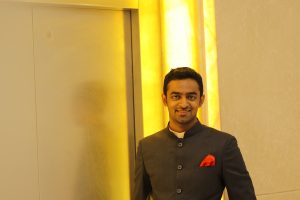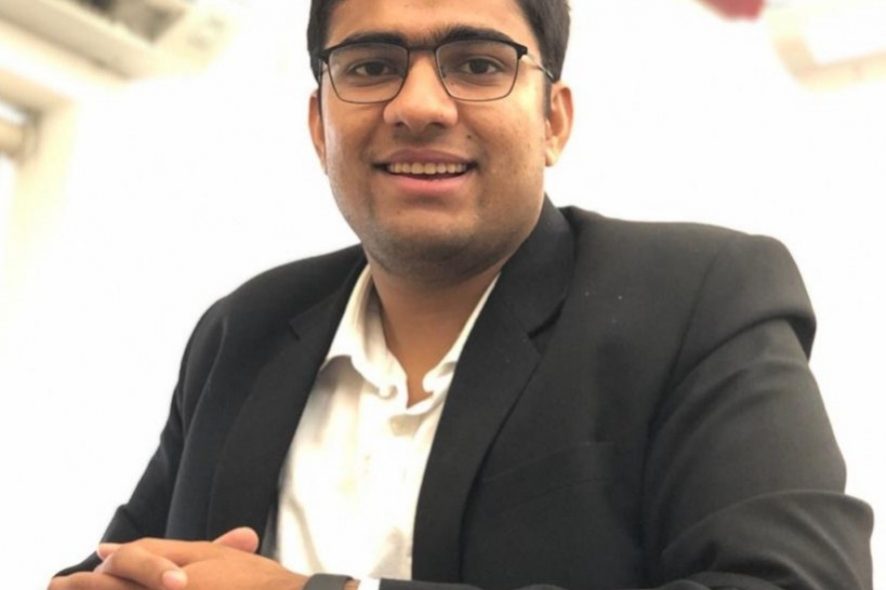Mr. Akshay Sharma and team were recently declared as Joint winners of the 3rd Edition of the Insolvency and Bankruptcy Moot Court Competition organised by the Centre for Transnational Commercial Law at The National Law University, Delhi, supported by the Insolvency and Bankruptcy Board of India (IBBI) and the UNCITRAL RCAP, in
collaboration with INSOL India & Society of Insolvency Practitioners of India (SIPI). We thank Mr. Akshay Sharma for his time.
1.If you could please tell something about yourself and your law school experience thus far?
I am a final year law student at National University of study and research in law, Ranchi (NUSRL) and belong to Roorkee, Uttarakhand. I will be a first generation lawyer and have a passion towards studying law and it’s ancillary but obvious field, politics. As I am first in my family to study law, I came with a clean slate to law school and was hungry to explore various areas which a law student can. I tried my hands at almost everything including Moots, writing articles, MUNs and mooting attracted me most. So, in my first semester I decided to do a moot every semester and was able to fulfil that promise as NLUD IBC was my 8th moot court competition and I will be travelling to Denpasar, Indonesia next semester in March, 2020 to represent my university at 34th Jean Pictet Competition. I can say this with 100% conviction that it is a wonderful journey so far.
2. What is the procedure for allotting moots in NUSRL – and esp. NLUD Insolvency Moot? What was your team composition?
NUSRL have a rich mooting culture and the credit goes to its curriculum which used to have Compulsory Court Room Exercise (CRE) in law papers. So earlier, moots used to be allotted to the team having the highest average marks in CRE but from last two years, the moot court committee (MCC) is organizing an Intra Moot Court Competition to prepare a rank list of students that forms the basis of allotment. As far as my team goes, we were a two member team, consisting of me and a fourth year student Lavanya Pathak, who is also a avid Mooter.
3. How did you go about preparing for the moot? Can you tell us about your strategies for the competition?
One basic strategy which I follow in every moot court competition is that for the duration of preparation (allotment to memorial submission), I read moot proposition almost every day. This helps a lot because every day you are reading regarding legal issues and jurisprudence and so, after that when you the read problem, it gives new perspectives and arguments. Furthermore, I tried to avoid short term deadlines, as that will haste the process of genuine research for a particular issue and therefore I only set one deadline i.e. three days before memorial submission date. In particular, about NLUD Moot, the problem revolves around Insolvency and Bankruptcy
Code, 2016 and there is not a single good book as the jurisprudence is evolving every day. Furthermore, the research database are not updated as the cases are mostly dealt by tribunals but SCC was still very helpful. So we relied on IBBI website which puts almost every judgment of IBC on it’s site.
As far as drafting is concern, this moot have a very different memorial format i.e. you have to make one memorial only covering all issues of all parties in 18 pages. So, our initial draft was of 36 pages and it took us two days to cut it down to 18.
4. What was this year’s (NLUD Moot) proposition on? If you could please tell our viewers about the intriguing issues which were part of the proposition. Would it be right to claim that this year’s problem stood apart – a one of its own kind, without any precedent(s)?
This year Moot problem revolves around various issues regarding the power of Committee of Creditors and adjudicating authority regarding the resolution plan. Certain aspects of personal insolvency and cross border insolvency was also the part of the problem. The interesting part of the proposition was that NCLAT already decided these issues in Essar Steel case but the case was appealed to the Supreme Court and the judgment was reserved, so there was lot of room to give innovative and new arguments. Well it won’t be right to claim that problem was unique since this particular moot Come prop. every year have a unique problem which stands apart from the previous one. Indeed it was one of its kind, the memorial format was mind boggling.
5. You had a team comprising of 2 members, where the Organizing University rules specify that a maximum of 4 members can be part of a team. You could have opted for a 4-member team, but still you went ahead with a 2-member team & made things look easier (atleast the victory shows that ! :D). Why did you chose not to take 4 member team?
I encountered the same question by a judge in prelims two where we were against NLU Jodhpur (4 member team). There are three reasons behind having a two member team. Firstly, as I already said that competition was about IBC, 2016 and I was looking for someone who have some prior knowledge of the subject as it is not a part of curriculum and a recently enacted law. So I was only able to zero down to one such person. Secondly, I believe as part of my moot strategy that a speaker should be well versed with his issues. While doing the research alone, one is well versed with every basic thing. Why a particular provision or case law is relevant and at what stage it becomes inapplicable, the extensive reading eventually helps us to know every aspect in and out, and consequently, be fit to answer any question the judges may have. In delegating the research questions to the researcher, we tent to miss this basic knowledge of the issue and thus may go against us in Oral rounds. Fortunately my teammate also shares the same belief, so we decided not to have a researcher. Thirdly, my teammate is also a very close friend of mine and we previously participated in 23rd Stetson Competition together so, we were compatible with each other professionally and personally. Honestly, the team composition and compatibility is probably the most important thing when it comes to winning a competition and we both did’t want to disturb that equilibrium by adding a third member.
6. In the final rounds you had presented your arguments before a panel of eminent persons. How was the feeling?
Also, Mr. Akshay you have bagged the Best Oralist Award of the Competition as well as a training contract with AZB & Partners. You could not have asked for more, could you? How did you go about preparing for the Oral rounds?
The judges for the final were those who have drafted this code and are continuously amending it as regulators (Mr. Sahoo & Mr. Bahram Vakil) and Mr. Chandiok who is helping to develop the jurisprudence of IBC through case laws. So I was nervous since each submission made by us will be scrutinized by people who have made the Code. At the same time, i was also elated to have the opportunity of arguing before these eminent persons. I would like to add that the bench was too humble and appreciated each argument whether weak or strong. While participating in this competition I wasn’t aiming at best oralist prize and also the training contract wasn’t a part of prizes decided before the competition. It was Mr. Bahram Vakil, Founding Partner, AZB who decided to offer me that opportunity after finals. Thus, all this for just a very pleasant surprise, i enjoyed the journey, gave my best and i couldn’t ask for more in return.
As far preparation for oral rounds concerns, I always first give oral rounds to my team mates before the competition as they are well aware of each and every strong and weak points of each side. So, while practicing I always keep in mind the strongest argument of other side and think of counter that in my submissions only so that when the judged asks, I am ready with an answer. Also, thinking how the judges will be briefed, helps to understand what the problem is focusing on and what is expected of the participants. Also, i have seen people making question banks and preparing speeches but I never did that and I always have a point wise structure for my oral rounds.
7. What would be your advice to fellow law students on your overall mooting experience?
To be honest, I am not in a position to give an advice but on the basis of my experience, I could only say that mooting is one of the best things happened to me in law school and it also immensely help me to gain confidence to argue in a real courtroom. It taught me how to work in a team (I previously have 4 & 3 members team in other moots) & obviously introduced me to various law subject. It’s the best way to learn the application and interpretation of law. On a lighter note, It helped me travel to many places to participate and to make friends across
various law universities of India & abroad.
8. It was humble of you to share your experience with our readers. If you could also share with our readers:
a) about the moot & legacy of this competition, being the 34th Edition;
This particular competition is being organised since 1989 in memory of Jean Pictet by ICRC and Concurs jean pictet group. I came to know about this when I participated in 1st NALSAR IHL Competition, 2019 where after the final rounds judges told us that you should participate in Jean Pictet. The competition is a role simulation of a armed conflict where team will be given role of Armed Groups, International Organisations, lawyer & other actors and specifically deals with International Humanitarian law.
b) How to apply for this competition?
There is no national round for this competition in India but other countries do have regional rounds for this competition. So there was written selection round where you have answer two legal questions concerning IHL and submit your SOP and CVs. On the basis of that teams are ranked and 48 team selected from five different continent to participate in Jean Pictet Competition.
Thank you for your time Mr. Akshay and best wishes for your upcoming World Rounds at Indonesia!







